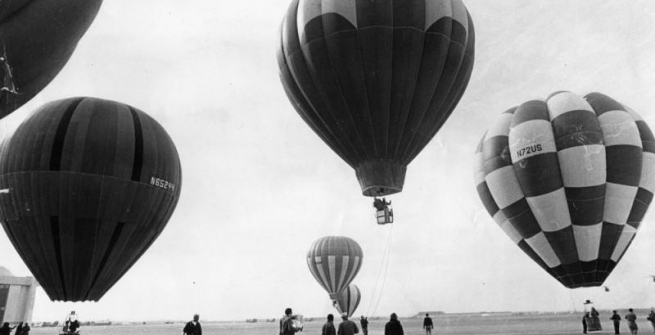Have you ever seen countless hot air balloons drift weightlessly across the sky like vibrantly colored jellyfish? This is something you might have viewed live, or on the internet, TV, or glimpsed on the glossy pages of a book or magazine. Perhaps you wondered how these enormous balloons could possibly stay afloat, let alone lift several people at once. They certainly are different from other flying machines such as airplanes and helicopters. Hot air balloons are amazing vehicles that seem to defy gravity and have a fascinating history.
Hot air ballooning is the oldest form of human flight. The first hot air balloon was invented over 200 years ago by Joseph-Michel and Jacques-Etienne Montgolfier, two French brothers. They built a prototype balloon, which, with the encouragement of King Louis XVI, they publicly demonstrated on June 4, 1783. The balloon floated to 3,000 feet and slowly descended. The people watching, who had never seen anything like this before, were ecstatic. A few months after that, on September 19, 1783, the brothers launched a balloon with the very first passengers: a sheep, a duck, and a rooster!
The first humans to volunteer for a balloon ride were Jean-François Pilâtre de Rozier, an adventurer and science teacher, and Francois Laurent, the marquis d’Arlandes. On November 21, 1783, their balloon floated above Paris, gliding over Notre Dame and Saint-Sulpice to safely land on farmland on the outskirts of the city. Benjamin Franklin witnessed this first flight.
Elizabeth Thible was the first woman to fly in a hot air balloon. On June 4, 1784, her aircraft flew for 45 minutes and over two miles. She sang opera music during her ride. Frenchman Jean-Pierre Blanchard and American John Jeffries flew across the English Channel in a hydrogen balloon on January 7, 1785. The first balloon fatalities were Pilatre de Rozier and Pierre Romain who were piloting a combination hot air and hydrogen craft. They crashed while attempting to cross the English Channel.
Hot air ballooning became a popular sport until World War I when the gas needed for fuel became too expensive and difficult to acquire. Later that century, in the 1960s, people in the United States began to once again experiment with hot air balloons. These newer balloons were made of polyurethane-coated nylon and filled with hot air by burning liquid propane gas. This was so successful that it revived an interest in hot air ballooning. There are now hot air balloon events that occur all over the world.
Buoyancy helps balloons to float. Heat causes air molecules to expand and move apart. As the hot air rises, it fills the balloon’s fabric and lifts the entire thing up. Burners that burn propane gas heat the air inside the balloon. This burner is placed under the envelope which is the fabric balloon that holds the air. This is made out of nylon, which works because it has a high melting temperature.
The pilot and passengers stand in a basket below the balloon. This basket is often made out of wicker, which is a light, flexible wood. The pilot moves the balloon according to the air currents. In order to rise, the pilot opens a gas valve, which causes the gas to create bigger flames and the balloon to rise. In order to lower the balloon, the pilot pulls a chord that opens a valve at the top of the balloon, causing hot air to escape.
I flew in a hot air balloon on a trip to Egypt a few years ago. It was both exhilarating and unnerving as we drifted gradually higher until we were soaring over farmlands and the Valley of the Kings. Since it was dawn, the eastern horizon was a smudge of soft, incandescent red. This was an experience that I will remember forever.
June 5 is Hot Air Balloon Day. One way to celebrate is, of course, to take a ride in a balloon. But if you prefer to keep your feet on the ground, you can read a book about hot air balloons, or perform experiments to learn how they work. Below is a list of books that feature hot air balloons and more. Enjoy!












